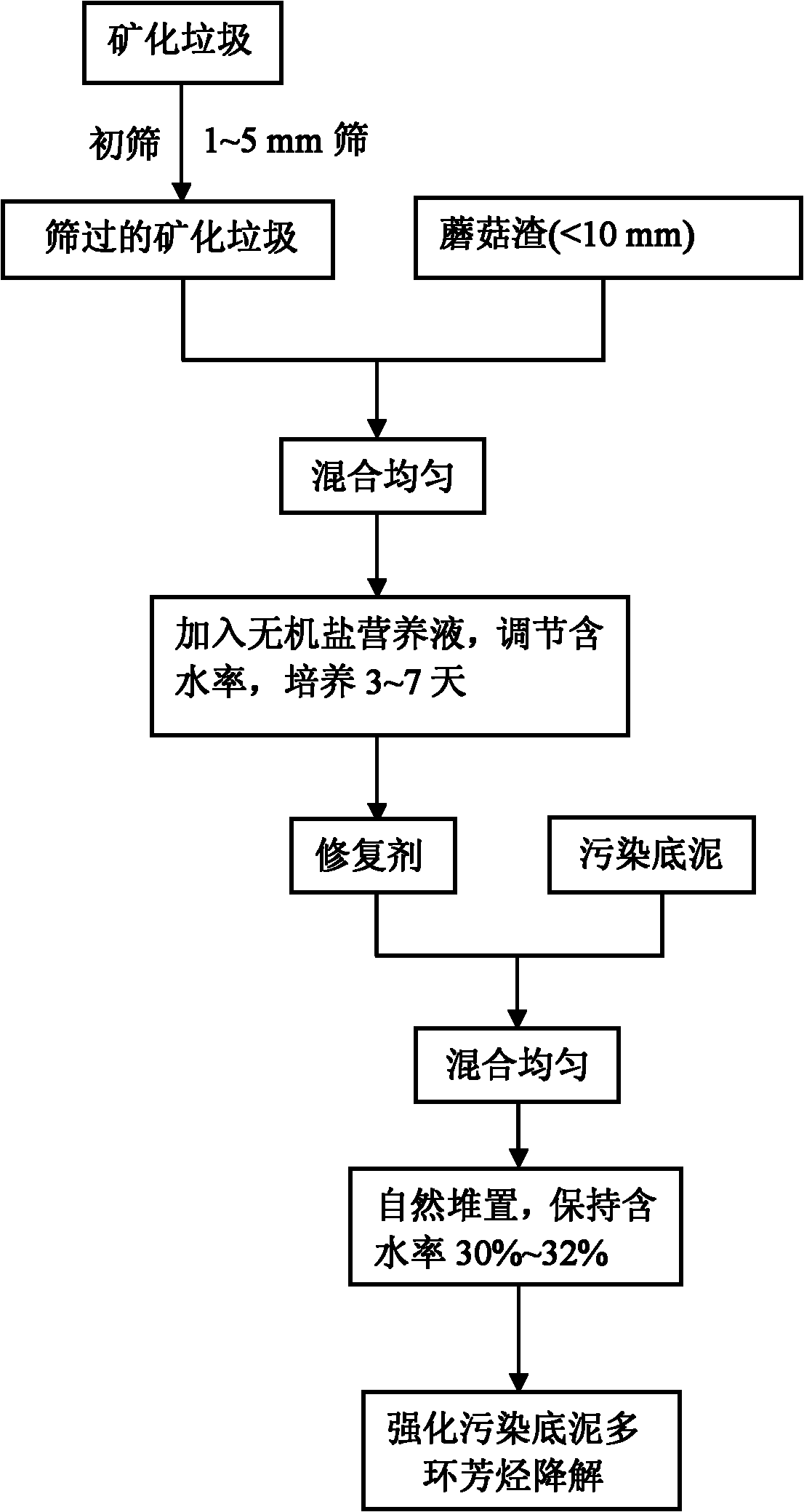Contaminated bottom sediment remediation agent and preparation method and using method thereof
A technology for polluted sediments and remediation agents, applied in biological sludge treatment and other directions, can solve the problems of difficulty in large-scale implementation, high cost, high energy consumption, etc., and achieves no secondary pollution risk, convenient operation, and low treatment costs. Effect
- Summary
- Abstract
- Description
- Claims
- Application Information
AI Technical Summary
Problems solved by technology
Method used
Image
Examples
Embodiment 1
[0020] Simple dehydration of the polluted sediment from the A section of the river is carried out, and its basic properties are shown in Table 1:
[0021] Table 1 Basic properties of polluted sediment in the river section A
[0022]
[0023] 1. Preparation of contaminated sediment remediation agent
[0024] Mineralized waste that has been landfilled for 10 years is taken, and the sundries are removed through a preliminary sieve, and then passed through a 1mm sieve to obtain mineralized waste with a particle size of less than 1mm and a moisture content of 17.7%. After the mushrooms are cultivated, the solid waste mushroom slag left after picking the mushrooms is chopped and passed through a 10mm sieve to obtain the mushroom slag with a particle size of less than 10mm. Mix the mineralized waste sieve and mushroom slag evenly at a mass ratio of 2:1, add inorganic salt nutrient solution NMS with a mass of 25% of the mixture, adjust the water content to 47%, and cultivate for 3...
Embodiment 2
[0031] After simple dehydration of the polluted sediment from the B section, its basic properties are shown in Table 2:
[0032] Table 2B Basic properties of polluted sediment in the river section
[0033]
[0034] 1. Preparation of contaminated sediment remediation agent
[0035] Mineralized waste with a landfill time of 13 years was taken, and the sundries were removed through a preliminary sieve, and then passed through a 5mm sieve to obtain mineralized waste with a particle size of less than 5mm and a moisture content of 16.3%. After the mushrooms are cultivated, the solid waste mushroom slag left after picking the mushrooms is chopped and passed through a 10mm sieve to obtain the mushroom slag with a particle size of less than 10mm. Mineralized garbage undersize and mushroom slag were mixed evenly in a mass ratio of 4:1, and an inorganic salt nutrient solution NMS with a mass of 25% of the mixture was added to adjust the water content to 45%, and cultivated for 5 days...
PUM
| Property | Measurement | Unit |
|---|---|---|
| Particle size | aaaaa | aaaaa |
| Particle size | aaaaa | aaaaa |
| Particle size | aaaaa | aaaaa |
Abstract
Description
Claims
Application Information
 Login to View More
Login to View More - R&D
- Intellectual Property
- Life Sciences
- Materials
- Tech Scout
- Unparalleled Data Quality
- Higher Quality Content
- 60% Fewer Hallucinations
Browse by: Latest US Patents, China's latest patents, Technical Efficacy Thesaurus, Application Domain, Technology Topic, Popular Technical Reports.
© 2025 PatSnap. All rights reserved.Legal|Privacy policy|Modern Slavery Act Transparency Statement|Sitemap|About US| Contact US: help@patsnap.com



